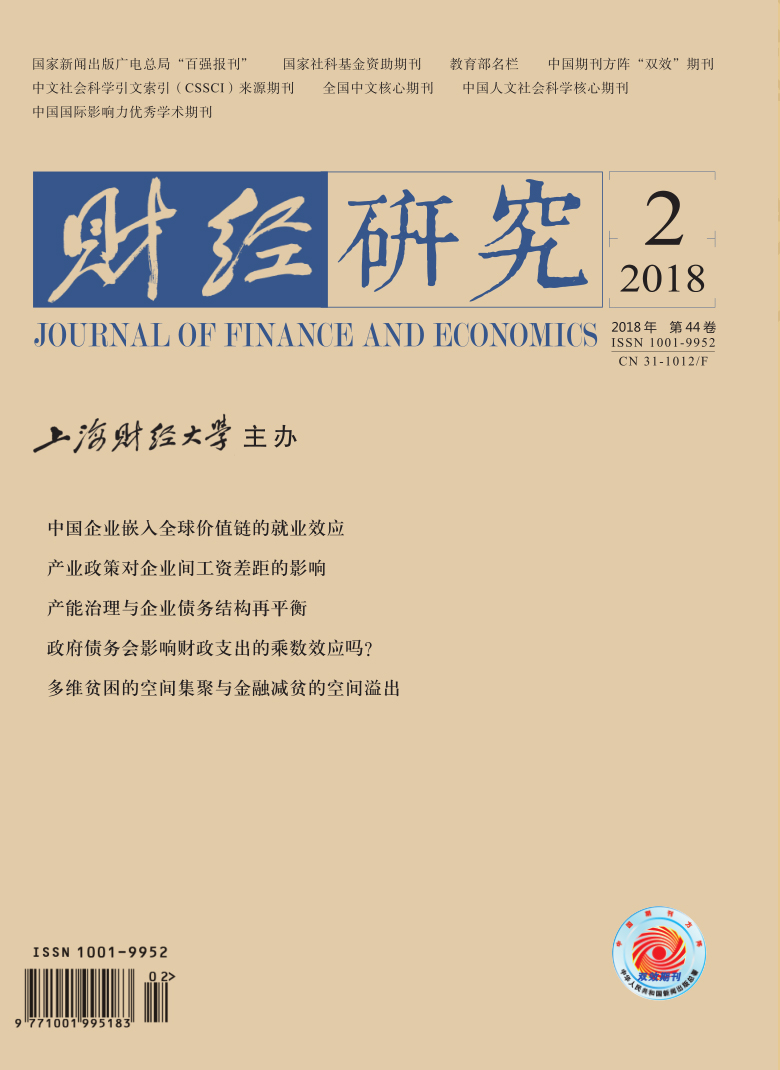文章利用手工整理的2007−2013年800对客户与供应商均为上市公司的供应链公司数据,探讨了客户股价崩盘风险是否会通过密切的供应链关系传染给供应商。研究发现:(1)客户股价崩盘风险对供应商具有传染效应,且这一传染效应主要出现在供应商自身抗风险能力不足时。(2)客户与供应商的关系越重要、越专有、越稳定、越良性,客户股价崩盘风险对供应商的传染效应越强。这表明由于密切的经济联系,当客户股价崩盘风险较高时,供应商可能会受牵连而发生崩盘。文章的研究为传染文献提供了新的适用情形,也展示了客户影响供应商的独特路径,从而丰富了传染效应和客户供应商关系的相关文献。
客户股价崩盘风险对供应商具有传染效应吗?
摘要
参考文献
3 李晓龙, 胡少柔, 王洁玲. 融资超募、机构投资者持股与股价崩盘——来自我国中小板、创业板市场的经验证据[J]. 会计与经济研究, 2016, (1): 78-89.
5 李宗彦, 覃予. 经济波动中的盈余管理与高管薪酬契约[J]. 财经研究, 2016, (12): 131—141.
12 An H, Zhang T. Stock price synchronicity, crash risk, and institutional investors[J]. Journal of Corporate Finance, 2013, 21: 1—15. DOI:10.1016/j.jcorpfin.2013.01.001
13 Banerjee S, Dasgupta S, Kim Y. Buyer-supplier relationships and the stakeholder theory of capital structure[J]. Journal of Finance, 2008, 63: 2507—2552. DOI:10.1111/j.1540-6261.2008.01403.x
15 Chen J, Hong H, Stein J C. Forecasting crashes: Trading volume, past returns, and conditional skewness in stock prices[J]. Journal of Financial Economics, 2001, 61(3): 345—381. DOI:10.1016/S0304-405X(01)00066-6
16 Cohen L, Frazzini A. Economic links and predictable returns[J]. The Journal of Finance, 2008, 63(4): 1977—2011. DOI:10.1111/j.1540-6261.2008.01379.x
17 Francis J R, Michas P N. The contagion effect of low-quality audits[J]. The Accounting Review, 2013, 88(2): 521—552. DOI:10.2308/accr-50322
18 Garleanu N, Panageas S, Yu J. Financial entanglement: A theory of incomplete integration, leverage, crashes, and contagion[J]. American Economic Review, 2015, 105(7): 1979—2010. DOI:10.1257/aer.20131076
19 Gleason C A, Jenkins N T, Johnson W B. The contagion effects of accounting restatements[J]. The Accounting Review, 2008, 83(1): 83—110. DOI:10.2308/accr.2008.83.1.83
20 Gosman M, Kelly T, Olsson P, et al. The profitability and pricing of major customers[J]. Review of Accounting Studies, 2004, (9): 117—139. DOI:10.1023/B:RAST.0000013631.48714.c1
21 Hertzel M, Li Z, Officer M, et al. Inter-firm linkages and the wealth effects of financial distress along the supply chain[J]. Journal of Financial Economics, 2008, 87: 374—387. DOI:10.1016/j.jfineco.2007.01.005
22 Itzkowitz J. Customers and cash: How relationships affect suppliers’ cash holdings[J]. Journal of Corporate Finance, 2013, 19: 159—180. DOI:10.1016/j.jcorpfin.2012.10.005
23 Jin L, Myers S C. R2 around the world: New theory and new tests[R]. NBER Working Paper, 2006.
24 Kim J, Li Y, Zhang L. CFOs versus CEOs: Equity incentives and crashes[J]. Journal of Financial Economics, 2011a, 101(3): 713—730. DOI:10.1016/j.jfineco.2011.03.013
25 Kim J, Li Y, Zhang L. Corporate tax avoidance and stock price crash risk: Firm-level analysis[J]. Journal of Financial Economics, 2011b, 100(3): 639—662. DOI:10.1016/j.jfineco.2010.07.007
27 Kim J, Zhang L. Accounting conservatism and stock price crash risk: Firm-level evidence [J]. Contemporary Accounting Research, 2016, 33(1): 412—441. DOI:10.1111/care.2016.33.issue-1
28 Mistrulli P E. Assessing financial contagion in the interbank market: Maximum entropy versus observed interbank lending patterns[J]. Journal of Banking & Finance, 2011, 35(5): 1114—1127.
29 Oh F D. Contagion of a liquidity crisis between two firms[J]. Journal of Financial Economics, 2013, 107(2): 386—400. DOI:10.1016/j.jfineco.2012.08.018
30 Olsen C, Dietrich J R. Vertical information transfers: The association between retailers’ sales announcements and suppliers’ security returns[J]. Journal of Accounting Research, 1985, 23: 144—166. DOI:10.2307/2490695
31 Pandit S, Wasley C E, Zach T. Information externalities along the supply chain: The economic determinants of suppliers’ stock price reaction to their customers’ earnings announcements[J]. Contemporary Accounting Research, 2011, 28(4): 1304—1343. DOI:10.1111/j.1911-3846.2011.01092.x
32 Patatoukas P N. Customer-base concentration: Implications for firm performance and capital markets[J]. The Accounting Review, 2012, 87(2): 363—392. DOI:10.2308/accr-10198
33 Raman K, Shahrur H. Relationship-specific investments and earnings management: Evidence on corporate suppliers and customers[J]. The Accounting Review, 2008, 83(4): 1041—1081. DOI:10.2308/accr.2008.83.4.1041
34 Titman S, Wessels R. The determinants of capital sturcturechoice[J]. Journal of Finance, 1988, 43: 1—19. DOI:10.1111/j.1540-6261.1988.tb02585.x
35 Ute S. Buyer structure and seller performance in US manufacturalindustries[J]. The Review of Economics and Statistics, 1991, 73(2): 277—284. DOI:10.2307/2109518
36 Wang J. Do firms’relationships with principal customers/suppliers affect shareholders’ income?[J]. Journal of Corporate Finance, 2012, 18: 860—878. DOI:10.1016/j.jcorpfin.2012.06.007
37 Xu N, Li X, Yuan Q, et al. Excess perks and stock price crash risk: Evidence from China[J]. Journal of Corporate Finance, 2014, 25: 419—434. DOI:10.1016/j.jcorpfin.2014.01.006
引用本文
彭旋, 王雄元. 客户股价崩盘风险对供应商具有传染效应吗?[J]. 财经研究, 2018, 44(2): 141–153.
导出参考文献,格式为:





 11338
11338  7501
7501

